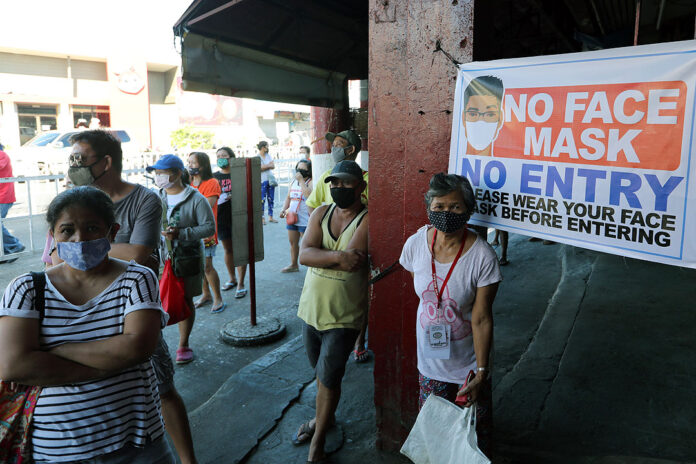THE PHILIPPINES will expand a new coronavirus alert level system first tested in the capital region that’s meant to ease the lockdown burden on the economy into other parts of the country starting Oct. 20, the presidential palace said on Tuesday.
“We expanded our pilot implementation after a decrease in cases and improvement of our healthcare utilization rate, which appear to be connected to our alert levels in Metro Manila,” presidential spokesman Herminio L. Roque, Jr. told a televised news briefing in Filipino.
An inter-agency task force has put Batangas, Quezon Province including Lucena City under Alert Level 2.
Also under the same alert level are Bohol, Cebu City, Lapu-Lapu City, Mandaue City and Cebu Province in central Philippines and Davao De Oro, Davao Del Sur and Davao Oriental in Mindanao.
Mr. Roque said Cavite, Laguna, Rizal, Siquijor, Davao City and Davao del Norte will be under Alert Level 3, under which theaters would be allowed to operate. The capacity of allowed businesses would also be increased.
Negros Oriental and Davao Occidental will be under Alert Level 4, which bans theaters, amusement parks and playgrounds, karaoke bars, live voice or wind-pipe performances and contact sports establishments.
The Department of Health (DoH) reported 4,496 coronavirus cases on Tuesday, bringing the total to 2.7 million.
The death toll rose to 40,972 after 211 more patients died, while recoveries increased by 9,609 to 2.63 million, it said in a bulletin.
There were 63,637 active cases, 79% of which were mild, 5.2% did not show symptoms, 4.8% were severe, 8.97% were moderate and 2% were critical.
The agency said 47 duplicates had been removed from the tally, 31 of which were reclassified as recoveries, while 145 recoveries were relisted as deaths. Seven laboratories failed to submit data on Oct. 17.
The country’s pandemic task force placed Metro Manila under Alert Level 3 from Oct. 16 to 30.
Meanwhile, the COVID-19 reproduction rate in the National Capital Region had fallen to 0.55 as of Oct. 18, the lowest since May 18, the OCTA Research Group from the University of the Philippines said.
“We hope we can keep this below 0.6 for the rest of the year,” OCTA Research fellow Fredugusto P. David tweeted. The seven-day average of new coronavirus disease 2019 (COVID-19) cases in Metro Manila was 1,411, he added.
Also on Tuesday, police said it would deploy more cops in public places to enforce minimum health standards amid bigger crowds after the alert level in Metro Manila was relaxed to No. 3
National police chief General Guillermo T. Eleazar said they “understand the concern of our colleagues in the Department of Health and the medical community” about reports of people flocking to malls and other places of interest at the weekend.
Health Undersecretary Maria Rosario S. Vergeire earlier reminded the public not to be complacent amid decreasing coronavirus infections.
Many Filipinos flocked to Dolomite Beach in Manila Bay, while some people failed to observe health protocols in parks and churches.
Private Hospitals Association Philippines President Jose Rene D. De Grano told a televised news briefing on Tuesday the downtrend in coronavirus infections was the result of strict enforcement of quarantines from Aug. 21 to Oct. 15.
Under Alert level 3, certain businesses may operate at 30% capacity indoors and 50% outdoors. Tourist attractions and recreational venues such as libraries, museums, amusement parks, swimming pools and movie theaters have also been allowed to operate at reduced capacities. — Kyle Aristophere T. Atienza and Bianca Angelica D. Anago

